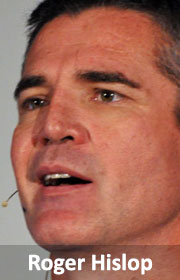 Open-access networks. Giving a little, to get a lot — in the long run. Various models are already used, at least in principle, in the recent South African home fibre roll-outs. Now how about open-access wireless networks? Why don’t we share more for the greater good (and better profits)? And if we were to, how would it work operationally, technically and financially?
Open-access networks. Giving a little, to get a lot — in the long run. Various models are already used, at least in principle, in the recent South African home fibre roll-outs. Now how about open-access wireless networks? Why don’t we share more for the greater good (and better profits)? And if we were to, how would it work operationally, technically and financially?
It’s a complex discussion … the technicalities and the operating models will not be a simple nut to crack. Even harder than these practicalities: what glue will hold together a fractious wireless Internet service provider (ISP) community. They will need to share, and to do that they must trust each other. This is probably the single biggest obstacle, as described by Steve Song in his post “Open access and the cost of mistrust”.
When we were kids, our parents and teachers impressed on us again and again that we should share nicely. If we shared with others, we might not immediately get our way, but in the big scheme of things, good things would happen. It would be smiles all round and we’d all have a chance with the best toys. Then time passed, we grew up and became selfish bastards.
There’s no mystery why … when we’re little kids, we have the benevolent dictatorship of our parents and nursery school teachers to make sure that those who will share are not abused by that nasty kid who wants it all for themselves.
As we get older, we have to look out for ourselves and our families, because the benevolent eye of the state or civil society to regulate fairness is limited.
Wireless ISPs already have to share the airwaves … they need to use the spectrum commons fairly equitably. Flare-ups happen. Generally, either cooler heads prevail, or the Wireless Access Providers’ Association (Wapa) intervenes as a trusted representative body. Everyone eventually simmers down and gets on with running their businesses.
The flare-ups are bound to get worse as channels get more congested. Wapa has 226 members, and there are many non-member operators. Wireless ISPs are also growing into serious operations, and the stakes are getting higher.
At the same time, while input costs are dropping in terms of backhaul and transit, business costs are growing. High sites are becoming more expensive to secure, landlords are wanting a bigger cut, and staff and equipment costs are rising.
In every practical way, it makes sense for wireless ISPs to start to join forces and pull their infrastructure together into an open-access network. This should lead to economies of scale, less interference, lower roll-out costs and lower capex.
How could it work? Will it work?
There’s one model to look at: Vast Networks, the Internet Solutions/MultiChoice joint venture to create an open-access wireless wholesale provider. It’s a monolithic company that can develop a network from scratch with carrier-grade kit and greenfield business. That won’t work for a patch-up of independent wireless ISPs.
How could it work?
There are a few models — one is a three-layer model, where there is structural and/or functional separation between physical network service provider, network orchestration/integration provider (let’s call it a wireless network exchange point) and communication service provider (CSP).
Wireless ISPs provide physical network services at a published rack rate to the market (other wireless ISPs), determined by “cost plus” calculations and competitive market forces. They are paid for this connectivity by a special purpose vehicle (the exchange point) that acts as a marketplace for CSPs. The exchange point would provide network management and interconnect management, as well as managing the billing relationships, and would take a cut of the connectivity fee paid by the CSP.
A wireless ISP can act as both an NSP and a CSP, and CSPs can buy access on any NSP through the exchange point. Simple, no?
A caveat: this discussion is of a wireless open-access network with Wi-Fi as the bearer. Because it’s licence-exempt, it simplifies somewhat the legal hurdles.
Wireless open-access networks are different to the recent open-access fibre plays by the likes of Vumatel, Dark Fibre Africa, Fibrehoods and even Telkom (with it’s newfound enthusiasm for openness). The wireless networks already have a fairly deep and fairly old installed base — 10 years or more. They’re also incredibly fragmented, both in coverage (and duplicate coverage), and in installed equipment (everything from old D-Links running OpenWrt to hacked Mikrotiks).
Unlike fibre-to-the-home operators, there is also an intractable mix of consumer access links (Wi-Fi hotspots and point-to-multipoint services), middle-mile backhaul over radio, fibre, ADSL and baling wire, sometimes with a wireless ISP-operated backbone, sometimes hooked up any which way with Internet access bought from a patchwork of suppliers.
Gluing these together will require some clever thinking, complex interconnections and a low-friction marketplace to mediate the various players.

Some options floated are to not try unify the network layer, and rather go with a roaming regime — that wireless ISPs can avoid the complexity of integration by creating broader roaming agreements. Good idea? No. I’m not sold, as you have all the billing/authentication complexity, but not the economies of scale and simplification of the physical networks, or the ability to target (and compete for) more customers on the access layer.
If there is a wholesale open-access network, with a network exchange point managing interconnect and federated user authentication, some other technical possibilities become real.
Much of the thinking below I’ve cribbed from an excellent (if now slightly dated) paper that you can read here.
The technical and billing challenges can be solved (and I welcome suggestions from engineers with more expertise than me).
What will be harder is the trust issue. Wireless ISPs must accept that by pooling resources they will all benefit. They will need to do a lot of work to set up an NXP — technical issues abound, as do commercial and legal complexities.
Key here is that the physical infrastructure wholesalers (probably at first functionally separated units from a full-service wireless ISP) get enough of the revenues to make it worthwhile — they must get a cut of service revenues to prevent an unsustainable race to the bottom on price.
We’ve already seen something like this playing out in the fibre space, where companies thought they could make enough from high volume/low margin physical layer business.
When undersea cable system Seacom was first commissioned, it was essentially an open-access. It slowly had to climb the stack looking for revenue. It now offers Internet protocol transit and other, higher-level services. Will Dark Fibre Africa and Vumatel climb up the stack the same way?
Will government’s ideas of a fibre and wireless national broadband network get off the ground, spurring action? Will open access be regulated, as government’s South Africa Connect broadband policy suggests?
As an OECD analysis puts it: “To date, open access has rarely been provided voluntarily, and it is usually the result of direct or indirect public intervention.”
Will wireless ISPs and Wi-Fi hotspot operators realise that their nursery school teacher was right all those decades ago… if you play nicely, and share with the other kids, everyone benefits.
Someone has to break the pattern and share, because otherwise the independent wireless ISPs will be swept aside by those with national muscle. And with them will go consumer choice, and the millions of rand they spend with the tier-one ISPs on bandwidth.
This piece is meant as an open invitation to anyone involved in the industry to chip in their thoughts, comments and bright ideas, preferably in the comments section below to stimulate debate. The subject of open-access wireless networks will be the hot topic of next week’s Wapa Future Wireless Technologies Forum, to be held at Spier near Stellenbosch on Monday.
- Roger Hislop is an engineer in the research and innovation group at Internet Solutions. He also serves on Wapa’s spectrum working group. He writes here in his private capacity




